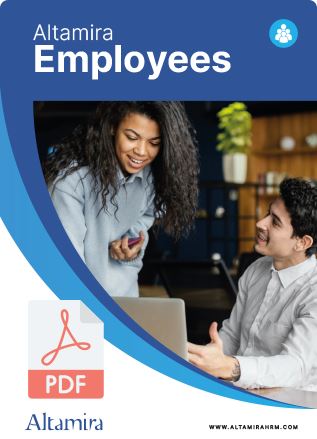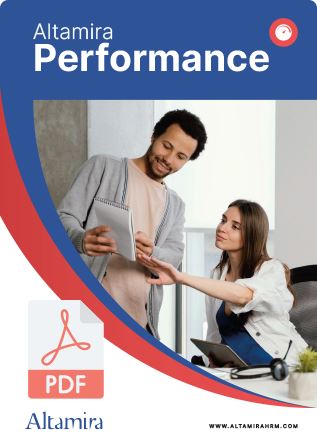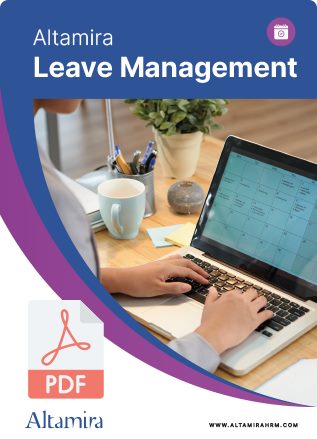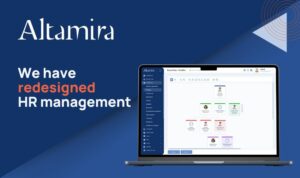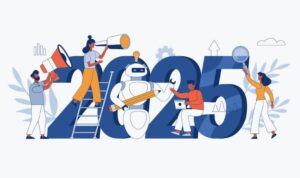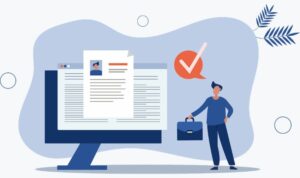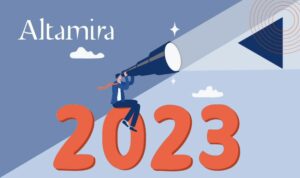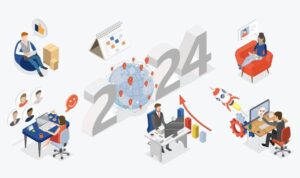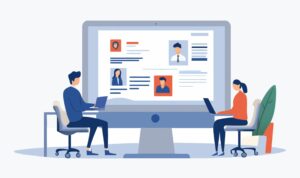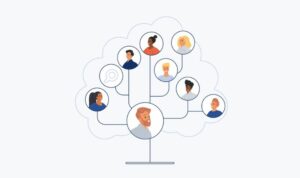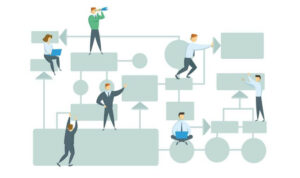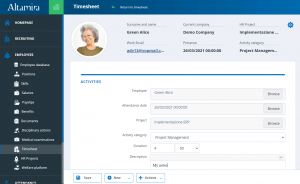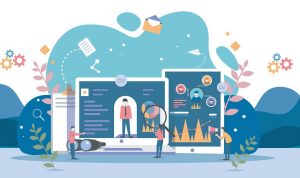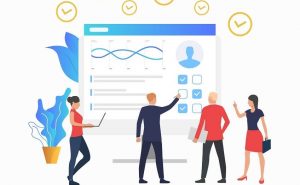The widespread adoption of cloud technology has made it easier for all business departments (such as HR, marketing, sales, and customer service) to independently proceed with the digitalization of their respective sectors.
Browser-based software usage has eliminated several complexities associated with on-premise solutions that traditionally required significant IT involvement, such as:
- The need to install systems locally on the company’s servers, a task demanding resources and superior technical knowledge.
- The responsibility to set up and maintain the IT infrastructure supporting the software, including storage and setup systems.
- The obligation to locally install each software update at the risk of compatibility issues.
However, this does not diminish the importance of the IT department’s contribution to the selection of cloud-based HR software. The IT department’s role in selecting cloud-based HR software is crucial. Their expertise is invaluable, especially for complex projects requiring integration with other business applications and prioritizing security. In fact, some companies choose to involve the IT department directly in the HR software selection process, working closely with the end users of the tool.
The Advantages of Entrusting HR Software Selection to IT Professionals
There are compelling reasons to consider assigning the scouting of HR digitalization solutions to the company’s IT department— or the IT manager in the case of SMEs.
Sometimes, it’s a matter of resources and opportunities: the company’s HR department may be too overwhelmed to tackle additional strategic projects, or, in the case of smaller companies, it may be poorly structured or even non-existent. In such cases, the natural substitute is the IT department or, less frequently, the procurement department.
Alternatively, leveraging the technical department’s expertise and knowledge may be a strategic choice. Whatever the motivation, several advantages may drive a company to delegate the selection of new HR software to IT. Let’s explore some of them.
1. Technical Expertise
Regardless of how simple, intuitive, or self-service a software may appear, it remains a highly complex product whose technical aspects can be thoroughly understood and evaluated only by those with a deep understanding of software technology. An IT professional can assess the technological viability of the considered solutions, their future potential, and their ability to interact with the existing systems.
They can also evaluate the performance and scalability of the application and take into proper account features such as Single Sign-On which are often overlooked by HR colleagues but crucial to improving user experience and streamlining account management at the corporate level.
2. Resources and Knowledge
In many companies, the IT department has greater resources and budget than the HR department. Incorporating the human resources digitalization project under its umbrella could thus be an advantage, allowing for the selection of quality vendors and tackling more processes at once.
Moreover, the IT department is more familiar with software selection processes. It knows where to quickly find vendors (e.g., by conducting searches with the right keywords or exploring aggregator sites specializing in business management software like Capterra), can independently navigate complex demo environments, and is accustomed to interacting with vendor sales representatives.
3. Big Picture Thinking and Integration Capabilities
The IT department is involved in all internal digitalization processes and has a better overview of the company’s technological infrastructure and existing workflow. As such, it will be best suited to identify the solution most suitable for agile and efficient integration with the existing internal systems. It will also be able to delve into the technical aspects of vendor offerings, such as APIs and Webhooks, which may be less familiar to an HR manager.
4. Cybersecurity and Compliance
As cybersecurity experts, IT professionals are better equipped to evaluate the reliability of both the HR software providers and the cloud computing platforms (IaaS) hosting their services, such as Microsoft Azure and Amazon Web Services. They also have more informed insights into the backup and disaster recovery strategies employed, and into the technologies used to encrypt and protect data.
The IT team will also be somewhat familiar with privacy and GDPR compliance, which are crucial aspects of HR. That being said, legal review will still be necessary before signing any contracts.
5. Service Level Agreements (SLA) and Estimates
As experts in business management systems, IT professionals can assess whether vendor economic requests are reasonable or excessive, especially regarding the timing and costs of setup and configuration.
They also have more knowledge to evaluate the service and product SLAs provided by the vendor, such as guaranteed response times to open support tickets, bug resolution timeframes, or the availability of service, which should typically exceed 99%.
The Limits of this Approach
Entrusting the search for company HR software to the IT department also has significant limitations, which explains why is often Human Resources that ends up carrying out this task.
IT professionals typically have limited knowledge of HR processes, hindering their ability to thoroughly assess platforms and identify the best fit for the HR department’s needs.
Topics such as performance evaluation, shift planning, internal rules on overtime and clock-ins, as well as employer branding are highly specialized and complex topics for non-experts. For the same reasons, IT professionals will struggle to assess if a software adequately complies with labor regulations and all the complexities of GDPR and tax laws involved in managing candidates, current and former employees.
Additionally, their familiarity with IT tools might lead them to overlook the user-friendliness standards required by HR departments and employees who will actually be using the software daily.
The best results come from collaboration
Some of the limitations identified in the previous paragraph are challenging to overcome. Expecting IT colleagues to become HR experts solely to ensure their efficiency in finding the right HR software would require a disproportionate effort compared to the final goal.
However, framing the project as a collaboration between the HR and IT departments can ensure excellent results.
Drafting a Brief
With the assistance of the IT department, the administration and human resources office should conduct a process analysis and prepare a brief on the HR digital transformation project. This brief should outline areas of interest, priorities, as well as essential and desired functionalities.
The document should also provide the necessary information to request quotes from vendors. This includes details such as the number of CVs expected to be archived if an ATS is to be acquired, the number of employees to be managed with the HRM software, and the number of schedules and shifts to be coded in the attendance tracking software.
The risk in this case is creating a document that is overly long and complex. It’s crucial to strike the right balance between detail and synthesis to avoid overburdening the IT department while still providing enough information for the research.
To facilitate the software selection task for the IT department, consider producing an Excel file with a list of desired functionalities and other questions for vendors to fill out. This way, comparing the lists will provide a starting point and eliminate solutions that do not meet the most essential requirements.
Identifying the Most Useful Features
The HR office should clarify which software features should be prioritized during the selection process. For instance, if the software is meant for use by employees, it should prioritize simplicity and intuitiveness in its interface and user experience. Even occasional users should be able to utilize the software without any issues. In such cases, having a native smartphone app represents a significant added value.
When digitizing complex processes such as attendance tracking or MBO evaluations, IT colleagues should focus on highly flexible and customizable solutions that can accurately replicate complex company rules.
This also helps to eliminate the risk of manual intervention being needed. If multiple HR areas need to be digitized and the goal is to manage them synergistically, the priority should be to find complete HRM suites to ensure total process continuity and a much faster learning curve.
Notable HRM Platforms Recommendation
It’s possible that colleagues working in the HR department or administration, as well as employees from other areas, may have used human resources management software in previous work environments. If their experiences were particularly positive in terms of support efficiency, ease of use, update frequency, or other reasons, it would be helpful to include these providers in the brief and subsequent software selection.
Having a list of known platforms to use as benchmarks will significantly facilitate the IT department’s work.
Budget and Integrations
When providing information to the IT department, it’s essential to clearly indicate the available budget. This decision is usually made by management, who may choose to allocate the necessary funds from the IT budget rather than the HR budget.
It’s also essential to specify with which applications the new system is expected to interact, such as the company’s payroll software, attendance tracking terminals, or the ERP.
Integrations often come with additional expenses. Therefore, it’s crucial to clearly define the company’s needs upfront to obtain an accurate quote from vendors.
Conclusions
The decision to assign the scouting for HR software to the IT department has both advantages and disadvantages and requires collaboration with the administration and personnel management. Indeed, the best results are achieved when this work is carried out collaboratively, leveraging the IT department’s technological knowledge and the HR office’s sector expertise.
In the future, this responsibility will likely fall to a new role that is already emerging in medium and large companies: the digital HR professional. This figure possesses knowledge in personnel management, strong IT skills, and can lead the HR digital transformation process from all directions.
While this role is currently rare in corporate structures, the emergence of numerous courses and master’s degrees in this field indicates that it will become increasingly relevant in the coming years.
Copyright: ©yellow_man/Adobe Stock


